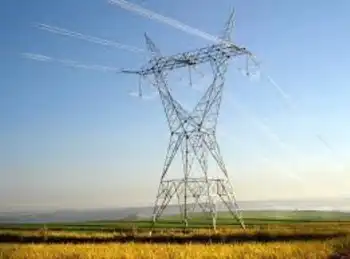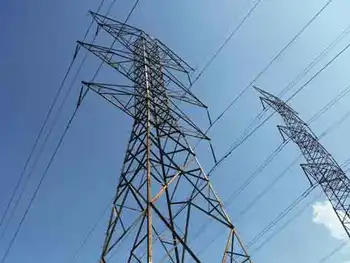Aviary tracking raptors to find safe sites for wind turbines
PENNSYLVANIA - Two golden eagles that soared along the Allegheny Front ridge in Central Pennsylvania late last year and are now gliding over the hills of West Virginia and Kentucky might one day help determine where new windmills will be built in Pennsylvania and elsewhere in the East.
The wide-winged raptors are wearing tiny radio telemetry transmitters that allow National Aviary researchers to track their migration routes and eventually develop the first bird's-eye-view data showing where electric wind turbines should be built and not built to minimize the killing of eagles and other big birds.
Most wind turbine development has occurred without any scientific research on the consequences to migrating birds, according to Todd Katzner, director of conservation and field research at the National Aviary on the North Side. That has increased the risk that the turbine blades, some more than 100 feet long, will become bird slicers and dicers.
"Our broader goal is to identify ways in which wind power can be developed safely," Mr. Katzner said. "To say that we're looking at the effect of wind power on birds is partially true, but we're really trying to identify areas of high and low risk for windmill development."
More than 500 of the majestic raptors, Aquila chrysaetos, traverse the state twice a year during spring and fall migrations, as do bald eagles, osprey, falcons and a variety of hawks. Many of those raptor species, some of which are endangered or threatened like the eastern golden eagle, follow narrow corridors through the state.
Those airborne pathways, which the birds follow to take advantage of buoyant updrafts, run along the very ridge lines that wind power companies are eyeing for development.
"Not many folks are aware that there's a thousand golden eagles flying through Pennsylvania in November and December," Mr. Katzner said. "That sounds like a substantial number, but if you put turbines in the wrong place, they could have a significant impact on the population."
Wind power is the fastest growing energy technology, and Pennsylvania is the leading producer of wind energy east of the Mississippi River, generating 153 megawatts, enough to power 70,000 homes. Given that the state's goal is to boost wind power production to more than 3,000 megawatts, a 20-fold increase, over the next 15 years, the potential for mayhem along the Appalachian ridges is a significant concern.
No one - not birders, the wind power industry, nor the government agencies that issue permits for turbine sites - wants a repeat of the siting debacle that occurred at Altamont Pass, near San Francisco, where 4,000 wind turbines were constructed on rolling grasslands that contain a large ground squirrel colony and are prime foraging grounds for migrating golden eagles and other raptors. Estimates put the number of birds killed annually at more than 4,700, about 1,300 of them raptors.
The wind power industry caught another black eye in 2004, when it was discovered that hundreds of migratory birds and up to 4,000 bats were killed by the whirling blades of 44 turbines in the Mountaineer Wind Energy Center on Backbone Mountain in West Virginia. Heavy bat mortality also occurred at the 20-turbine wind farm in Myersdale, Somerset County, which came on line in 2004.
"Any kind of additional information that would help make better decisions is something we would be interested in," said Frank Maisano, a spokesman for a coalition of wind power developers in the mid-Atlantic region. "But if we learn about a bird's flight path, that shouldn't automatically disqualify a site from siting consideration."
Christine Real de Azua, a spokeswoman for the American Wind Energy Association, said wind energy's impact on birds was a "very important issue," but was quick to add that fewer than one of 10,000 birds that die because of human causes is killed by a turbine. Most are killed because they run into buildings or windows or by house cats.
"We have a very light impact now, and if we can make it even lighter, that's a very good thing," she said. "The industry is committed to researching, responding and identifying solutions."
The goal of the aviary study, which could cost as much as $300,000 and is still seeking funding, is to produce maps that land managers, government regulators and the wind power industry will use to guide wind power development and turbine placement throughout the northeast. Golden eagles were selected for study because they are an "umbrella species," that migrate along routes shared by other raptors.
"Our aim is to provide the scientific information necessary to allow decision-makers to pursue use of renewable energy sources with environmental benefits, while, at the same time, developing this technology in an eagle-friendly way," Mr. Katzner said.
Efforts to track golden eagles began in late November, when two of the migrating birds were trapped at the Allegheny Front Hawk Watch, a ridge-top site operated by the Allegheny Plateau Audubon Society southwest of Central City.
The birds were outfitted with telemetry devices that transmit their locations via satellite link and show their flight paths in real time and their altitude and flight speed over a range of topographic and climatic conditions.
During the spring migration, researchers will attempt to trap and strap the 4-ounce telemetry units to another eight golden eagles.
The National Aviary, in partnership with the Carnegie Museum of Natural History's Powdermill Avian Research Center, Lafayette College and the Tussey Mountain Hawkwatch, will collect data from the transmitters for at least a year and, possibly, as long as three. The information will be used to create computer models that predict migration patterns for the eastern golden eagles, which range from the southern United States to northern Canada.
"The models will enable us to look at the cumulative impacts of many wind farms on eagle movements and identify critical migration bottlenecks where turbine development should proceed with caution," Mr. Katzner said. "It is essential to have this kind of detailed information before wind power projects are sited and constructed."
He said golden eagles and other raptors that follow similar migration pathways could be spared fatal encounters with the whirling wind turbine blades if the turbines are moved a couple of hundred feet or the angle of the turbine blades related to a ridge is altered.
The state Department of Environmental Protection, which issues permits for windmill sites, and the Pennsylvania Game Commission, charged with protecting all of the state's wildlife, don't know how many birds wind turbines kill now, but both agencies are interested in the data the aviary's study will produce.
DEP Secretary Kathleen McGinty is heading a statewide committee looking at wind energy regulation, including siting guidelines, and the Game Commission is pushing for voluntary agreements with individual wind power developers that require siting guidelines protective of birds and bats.
Those agreements would set guidelines for monitoring birds 18 months before turbine construction and continuing after a turbine starts spinning. Proposals to install wind turbines in Important Bird Areas, designated by the Audubon Society, would be required to do more detailed monitoring, as would those proposed for migratory routes. A separate, voluntary siting guideline agreement also is under development by the U.S. Fish and Wildlife Service.
Jerry Feaser, a Game Commission spokesman, said the commission was very interested in the aviary study and the information it could provide.
"Our concern is that the DEP's process is broader and a lot of wind power companies are trying to move ahead quickly," Mr. Feaser said. "We're trying to get ahead of that with agreements to avoid, minimize and if necessary, mitigate, impacts on birds and bats."
Related News

Drought, lack of rain means BC Hydro must adapt power generation
VANCOUVER - BC Hydro is adjusting its operating plans around power generation as extended heat and little forecast rain continue to impact the province, a report says.
“Unpredictable weather patterns related to climate change are expected to continue in the years ahead and BC Hydro is constantly adapting to these evolving conditions,” said the report, titled “Casting drought: How climate change is contributing to uncertain weather and how BC Hydro’s generation system is adapting.”
The study said there is no concern with BC Hydro being able to continue to deliver power through the drought because there is enough water at its larger…




